We all know he's the best digger in Cairo, but Sallah's real strength is his indomitable spirit (oh, and his lovely singing voice). A loyal compatriot with a roguish streak to match Indy's own, Sallah is a lover (he's got, like, 500 children), a fighter (witness the newspaper-covered punch in The Last Crusade) and able to improvise in a tight spot (we refer you to the Nazi flag rope replacement in The Wells Of Souls). What's more, he's knows that asps are very dangerous and that five camels is adequate compensation for his brother-in-law's recently destroyed automobile.
Science has proven– with the aid of a rat, a clipboard and everything – that it is physically impossible to flick to another channel once you have accidentally stumbled across any of the Indiana Jones films on telly*. No matter at what point you join, you know there will be a much-loved joke or action moment just around the corner and, yes, The Apprentice will have to wait until you've seen the bit where he beats up Pat Roach.
*Science has not proven this, but it's true.
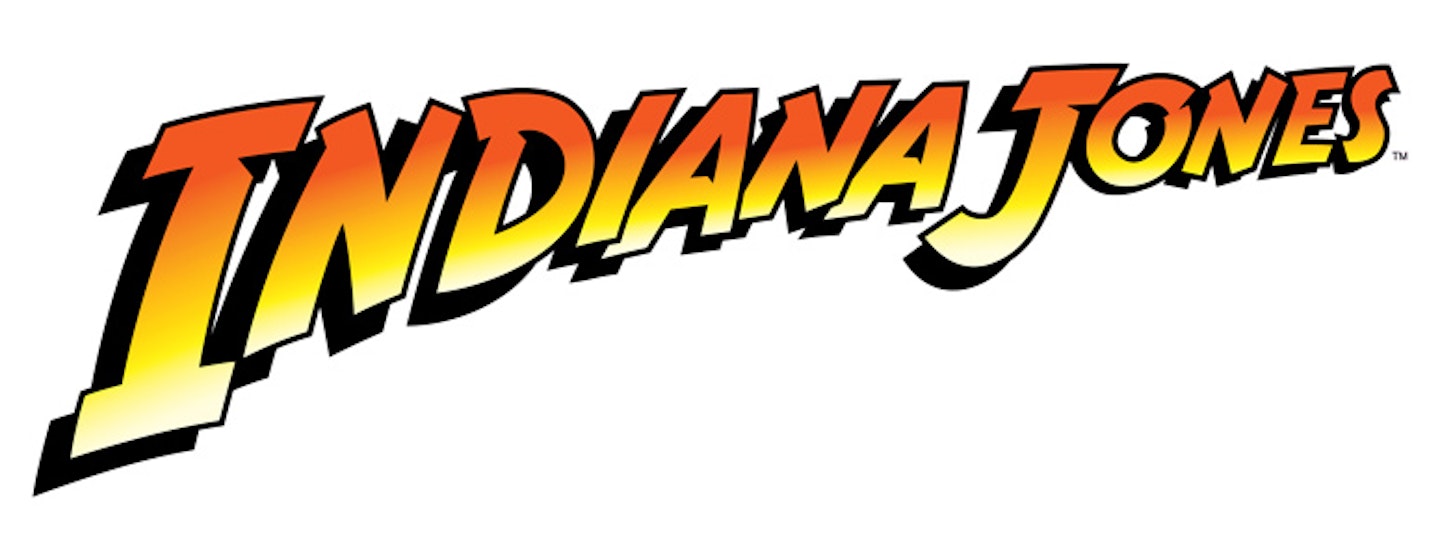
Dynamic. Iconic. Slanty. Perfect.
All three of the Indy films have good lines in abundance – "It's not the years, honey, it's the mileage"; "I should have mailed it to The Marx Brothers"; "Bad dates" – but the franchise showed Spielberg to be equally adept at comedy involving no words whatsoever. The best known is, of course, the shooting of the swordsman after his sword twirling, but we think the greatest might be the moment that Toht advances on Marion unfolding what looks like some kind of torture device... and turns out to be a coat hanger.
Perhaps the unsung hero of the Indiana Jones saga is cinematographer Douglas Slocombe. Londoner Slocombe, whose pre Raiders credits include the best of Ealing Comedies and The Italian Job, gives Raiders and Last Crusade a lavish high end Technicolor feel. Yet his real achievement is Temple Of Doom. Starting with the bright gaudy sheen of Old Hollywood – the opening musical number, the banquet, the love tease between Indy and Willie – Slocombe takes the lighting schema denser and darker, creating a stunning interplay of torchlight, shadow and lava light that goes against the grain of the typical brightly lit Hollywood blockbuster – Indy writhing under the blood of the kali lit only by candlelight is about as far away from Jerry Bruckheimer as you can get.
In the dark days before DVD extras, The Making Of Raiders Of The Lost Ark was the high mark for behind the scenes documentary film making. Directed by Phillip Schulman, the film is great on the snakes and stunts but is also full of high comedy – particularly a great sequence where Harrison Ford leaves to get mustard for his hot dog just as Spielberg reaches the climax of his talk through the storyboards ("Suspense killing you, Harrison?"). Much of the footage shot by Schulman turns up on the current more exhaustive DVD doc but there is something lovely and innocent about the original version put together when Indiana Jones was just a character rather than a phenomenon.
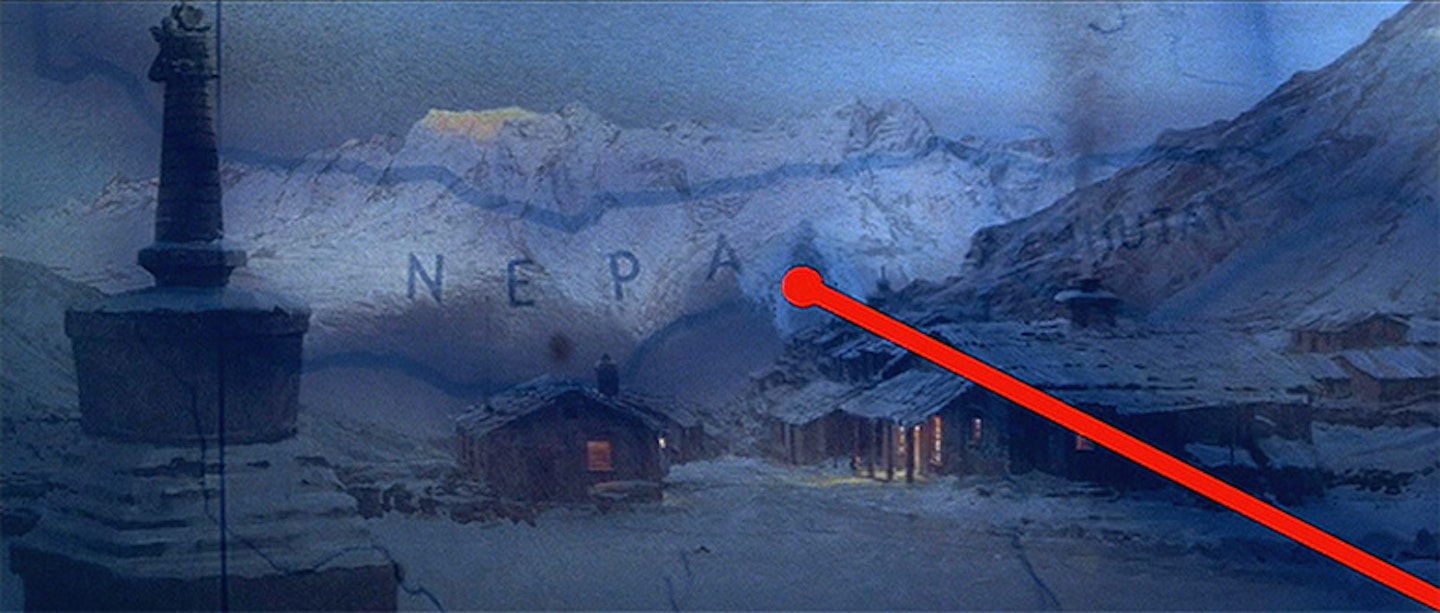
From the moment that the Paramount logo sly dissolves into a real South American logo, it is a sure sign that Raiders is going to be a romp through cinema history. Yet these nods to film folklore are never blatant or showy they are perfectly woven into the fabric of the films. From the exaggerated shadows on the wall of the Raven bar to the animated map that plots Indy's progress to shimmering stardust that appears over Temple Of Doom's Busby Berkeley opening number, the referencing is simultaneously generalised but specific, never aping a particular film, just filling every frame with a love of movie craft and magic.
While this is most readily apparent in the upper echelons of the credits – Paul Freeman, Ronald Lacey, Denholm Elliott – it is also present in the parade of Brit TV actors filling out the minor parts. So take a bow George Harris (Walcott) as pirate Katanga, David Yip (The Chinese Detective) as Indy's waiter-friend Wu-Han, Kevork Malkyian (Mind Your Language) as Cruciform Sword cultist Kazim, Alexei Sayle (The Young Ones) as the Sultan of Hatay and, of course, the inimitable Michael Sheard (Mr. Bronson off Grange Hill) as Hitler. Yet the king of Indy cameos is Pat Roach. A wrestler on Saturday afternoon ITV turned actor as Bomber in Auf Wiedersehen Pet, Roach caught the eye in Raiders as the slaphead mechanic who gets sliced and diced by the Flying Wing following a brutal round of fisticuffs with Indy.
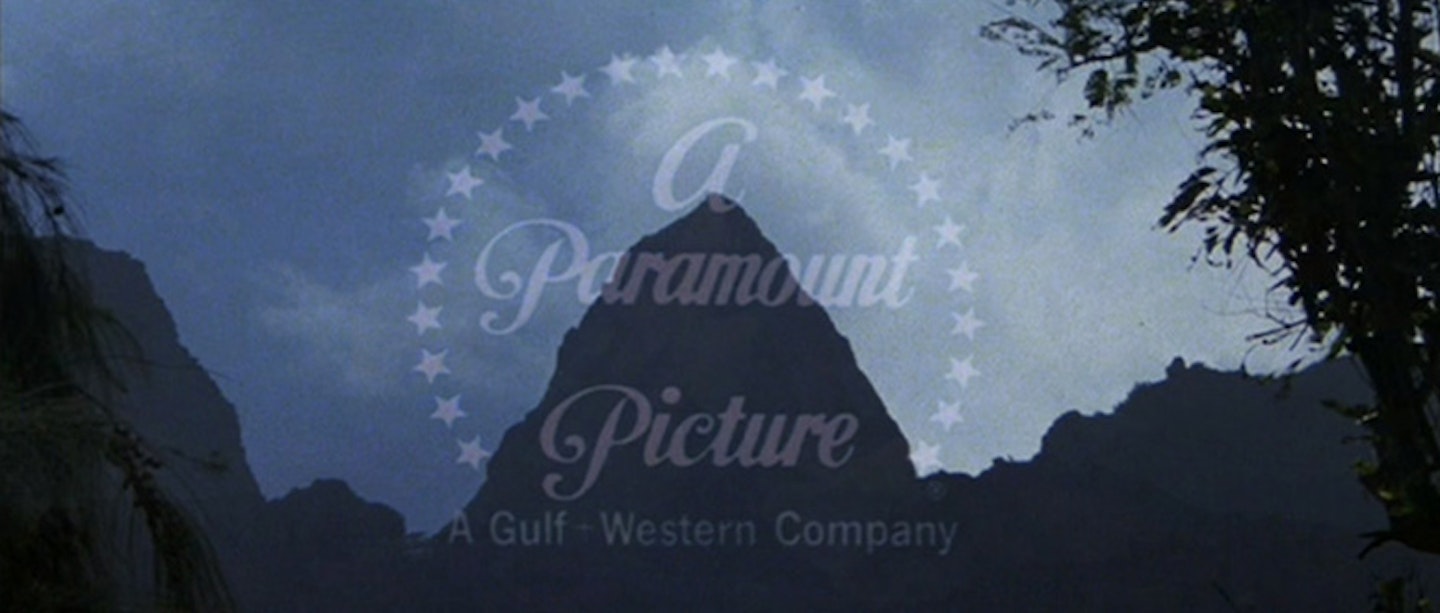
What started as a visual play on Paramount's snowy-peaked logo became a signature for the whole franchise. Each film begins with the studio's instantly recognisable mountain fading into an echoing live-action peak. Essentially pointless, but wholly satisfying.
No, we don't love the Nazis, of course. But as villains they served Indy perfectly. Temple of Doom's Mola Ram was a bit of a damp squib as baddies go, but the German evildoers were wholly memorable. Last Crusade's Elsa Schneider achieved the unlikely feat of making a Nazi sympathiser sympathetic, while Raiders' trio of ne'er-do-wells remain some of the franchise's best characters. The suave, rather cowardly Belloq made an intriguing portrait of Indy gone wrong, but the one we really love to hate is Toht, a man so darkly evil he should probably grow a moustache just to twirl it.
Ben Burtt's soundtrack for Raiders Of The Lost Ark is still held up today in Film Schools as the ultimate in movie sound design, re-recording all new effects rather than go to the stock sound effects library, Burtt created an aural experience that, like the film itself, is heightened but never too cartoony, adding layers of fun, atmosphere and narrative beats to all areas of the movie. After 60 years of tired punching sounds, Burtt made Raiders' fist fights sound fresh by bashing leather jackets with baseball bats, working the same magic on rolling boulders (a Honda civic coasting on a gravel road), mine car chases (Disneyland rides recorded in the dead of night) and scrabbling rats (speeded up chickens).
PORTRAIT: SARAH DUNN
Known as Jim to his mum, Steranko is the graphic artist we have to thank for the look of Indiana Jones. Employed to do some development work on Raiders, Steranko came up with a number of paintings of what he imagined Indy's world to look like. The sand-swept, dynamic pictures he produced set the visual tone for the movie and his painting of a square-jawed, hat-wearing, khaki-clad adventurer became the blueprint for the character. He's arguably deserving of as much credit for creating the character as Spielberg, Ford and Lucas.
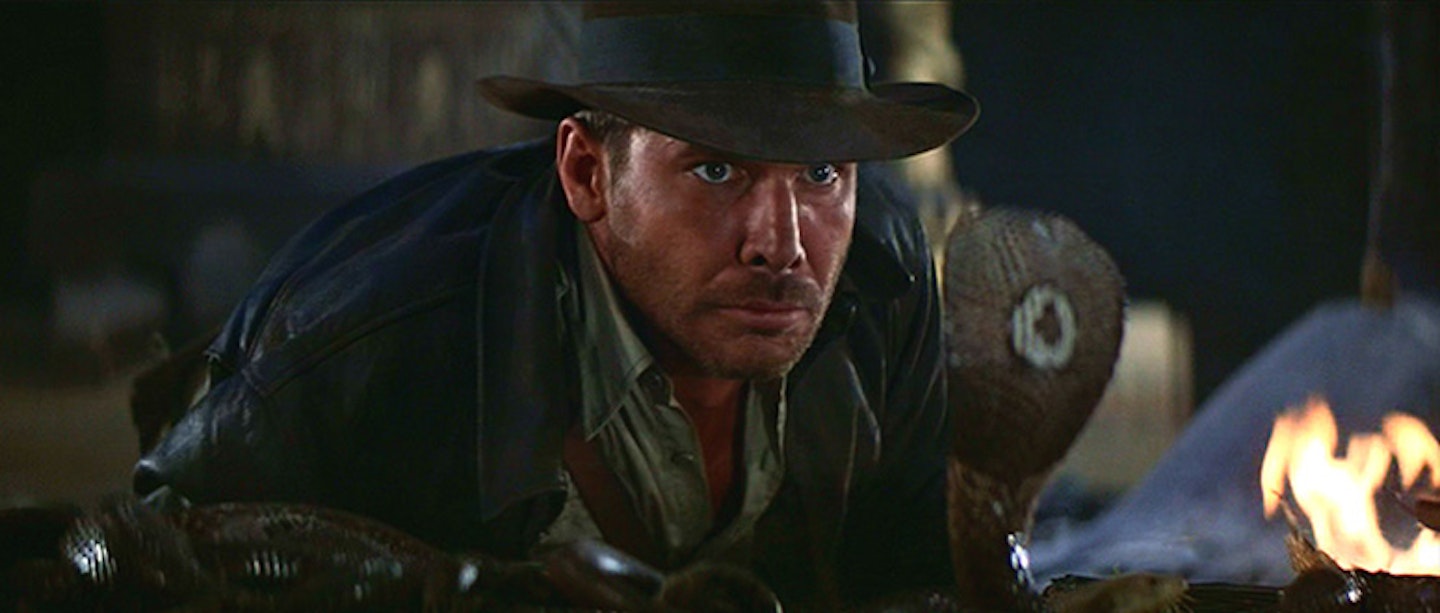
Every hero needs a nemesis. The Nazis may come and go from Indy's life, but one sworn enemy always remains. Why did it have to be snakes?
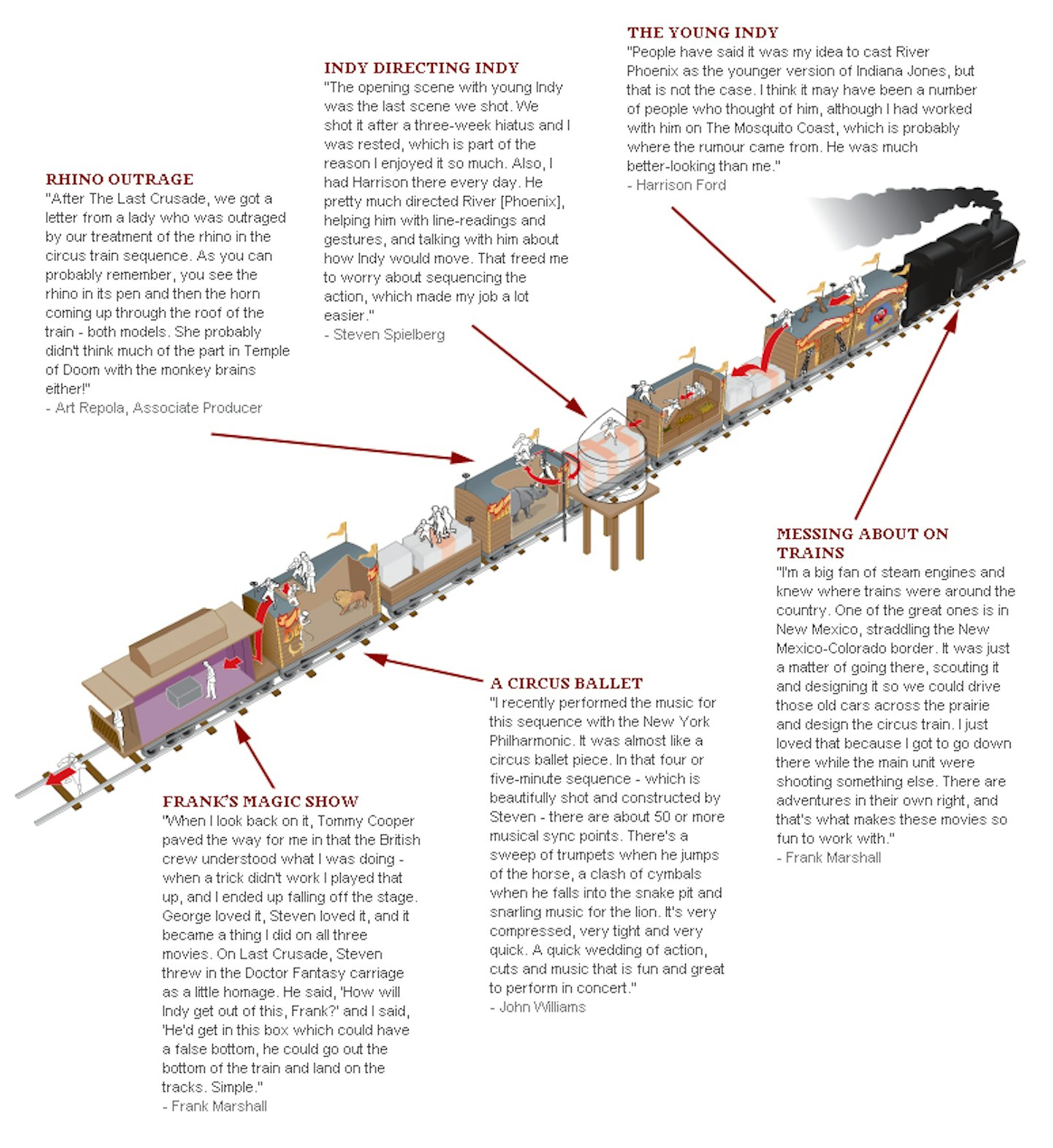
What he lacks in stature, Short Round more than makes up with moxie. He’s a cracking getaway driver thanks to some homemade platform heels, a dab hand at kicking Thuggee butt and is often the voice of reason in a tight spot (“No time for love Dr. Jones”). Rescuing Indy on more than one occasion, you could argue that Shortie is the real hero of Temple Of Doom – while the titular relic hunter is off searching for fortune and glory, it’s Short Round’s moral compass that keeps the adventure on the right track.
Both iconic and extremely handy, Indy's whip is the ultimate treasure-hunting accessory. Useful for swinging across bottomless pits, warding off bad guys and hanging off the back of moving vehicles, it's such an important part of the adventurer's arsenal that it was even given an origin story (as well as explaining how the young Henry Jones Jr. got that cool chin scar). Can also be used for grabbing the girl at the end of Temple of Doom. Try doing that with a lightsaber.
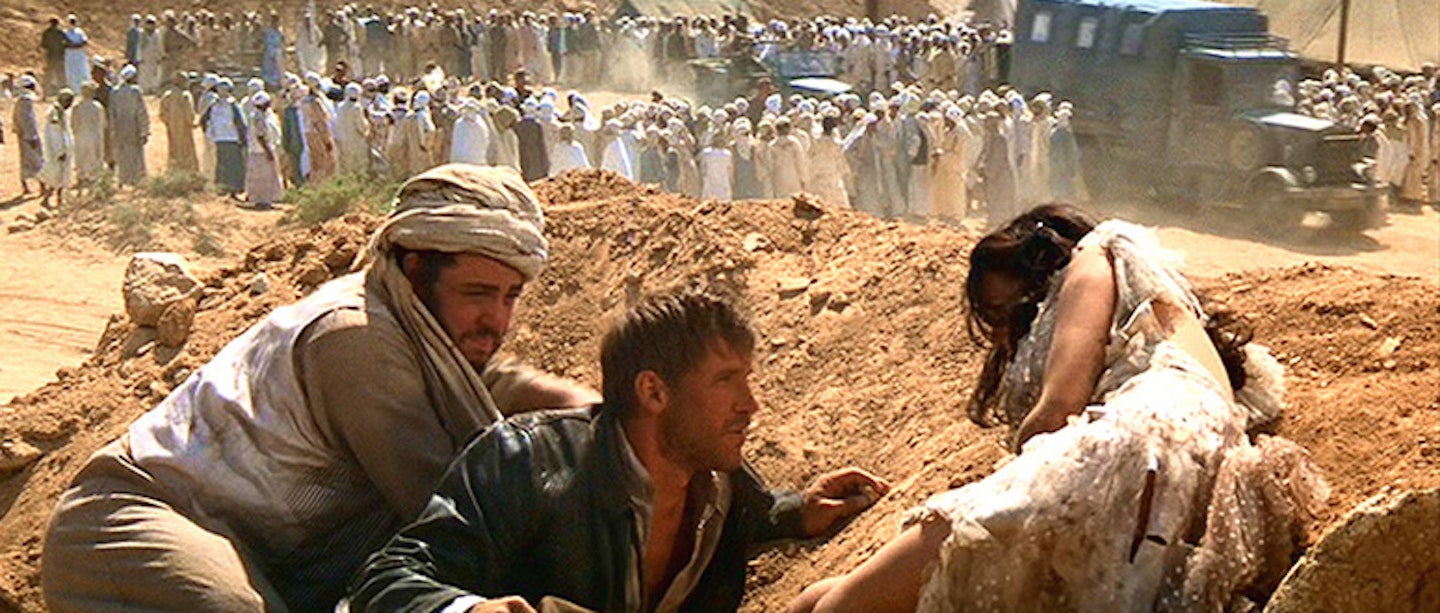
Indy's dialogue has always managed to be self-referential without being sly and, though all written by different screenwriters, the films have maintained a consistent witty voice. Handily, you can take almost any line and use it in daily life: "I'm making it up as I go along"; "It's not the years, honey, it's the mileage"; "You have chosen... wisely"; "Hold on to your potatoes!" You won't look nearly so cool saying them, but it's fun to try.
Most of them never said a word, but the franchise wouldn't be the same without them.
With a cast-iron constitution and a sharp tongue, Marion Ravenwood is more than a match for any number of Teutonic bad guys. Thanks to fast thinking and a preternatural ability to hold her liquor, she's as adept at getting out of trouble as she is gifted at getting into it. And if it weren't for her foresight in using the headpiece of the Staff Of Ra as a natty necklace, Raiders Of The Lost Ark would have been a much shorter film. Much more than just a damsel in distress (and a knockout in that slinky white dress), she's the real treasure in Indy's debut adventure.
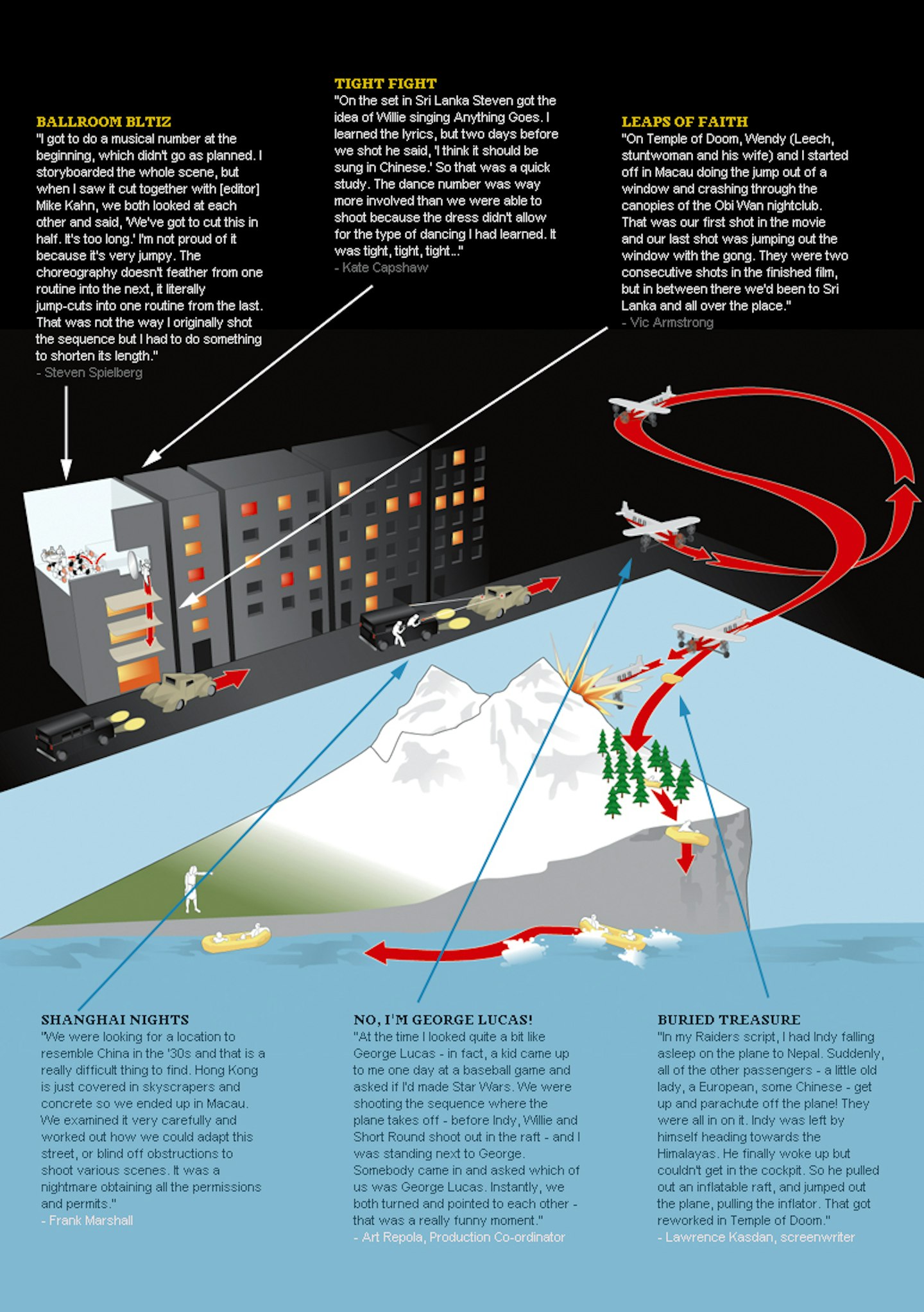
Stunt double, stunt co-ordinator and all-round stunt genius, Vic Armstrong is responsible for some of the most jaw-dropping moments in the Indiana Jones movies. Bearing such a likeness to Harrison Ford that the star once wrote "If you learn to talk, I'm in deep trouble!", Armstrong's inventive scenes helped to create the sense of bone-crunching realism that gave the original Indy flicks their wonderfully old-school feel. Special mention also goes to his wife Wendy, who doubled for the leading ladies in the first three films.
PORTRAIT: ROBERT GALLAGHER
Raiders' little capuchin – of the "black-capped" genus, for monkey nerds – is probably only second to Toht as the movie's most dastardly villain. He inveigles his way into the affections of Indy and Marion, only to betray them with the help of his eye-patched keeper. He even salutes the Nazis, for crying out loud (in one of Spielberg's favourite scenes). But he would come to a sticky end, thanks to chowing down on a plateful of "bad dates" in one of the only movie depictions of animal death that doesn't moisten the eyes of its audience. Pointless trivia: His monkey squeaks were provided by Frank Welker, who is also the "voice" of Abu in Disney's Aladdin.

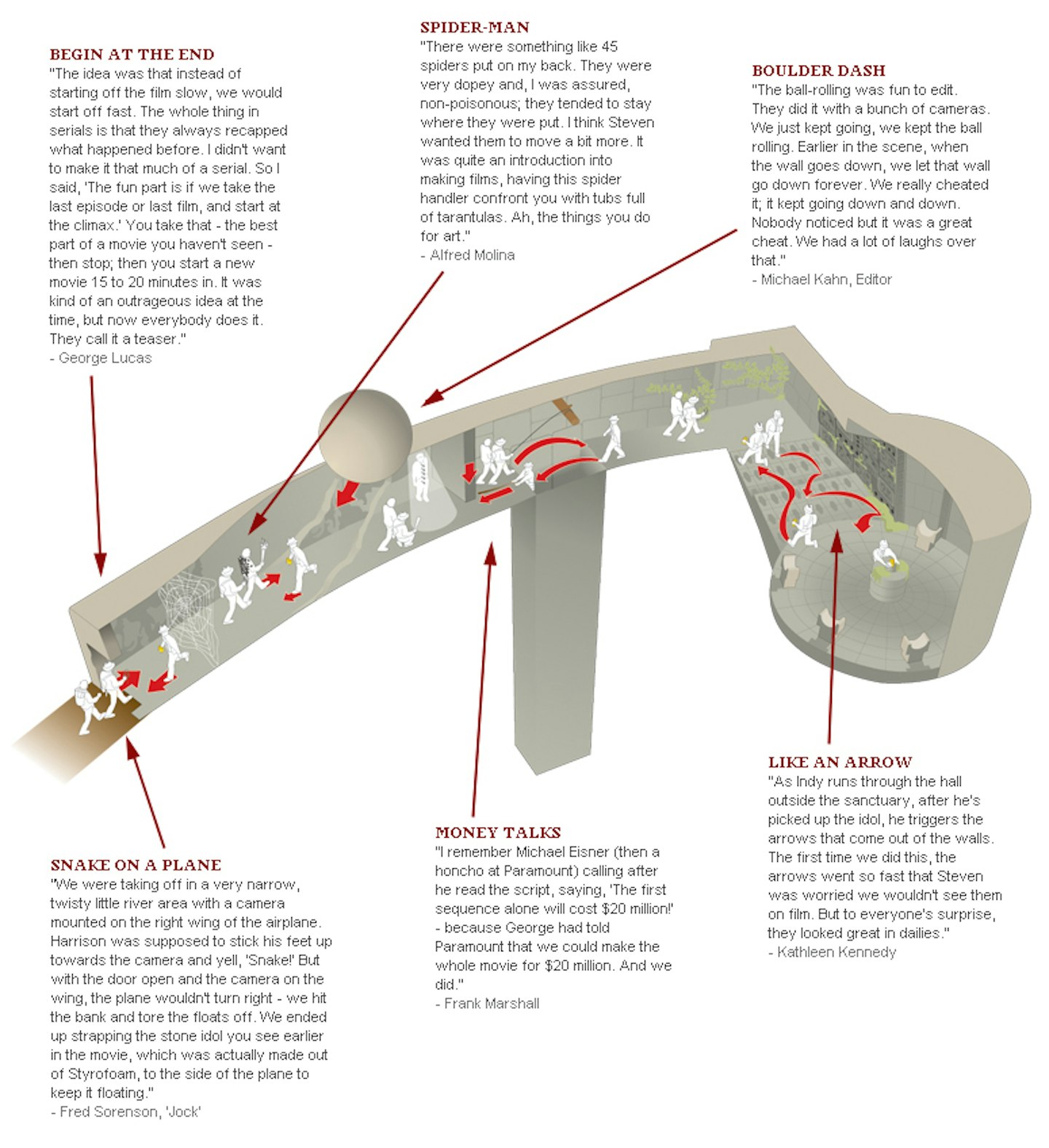
There was only ever one man capable of reducing the stubbled, scuffed lump of testosterone that is Indiana Jones to a sullen schoolboy: James Bond. Connery's casting was a masterstroke and flipped the third film on its head, exposing a new, lighter side of Indy after the darkness of Doom. Connery slides into the part of Henry Jones Sr. as easily as if it were one of Bond's tuxes. He also deserves our eternal respect for ad-libbing the line, when asked how he knew Elsa was a Nazi, "She talks in her sleep".
If John Williams had only composed the Raiders March, then Indiana Jones would have its place in film music history assured. But, with the possible exception of Star Wars, no film franchise has thrown up so much incidental score that is familiar to even the most casual film fan. The cues for the Map Room, the Basket Chase, The Ark Of The Covenant, the Temple Of Doom chant, Short Round and The Grail Theme are all instantly recognisable, an object lesson in how to marry images to memorable music. Williams' craft and skill make the exciting bits more thrilling, the scary bits more terrifying and the romantic bits more passionate. If you want a real benchmark for his contribution to the series, just watch Raiders' truck chase with the sound off, then on – the difference is 120ccs of pure Johnny Williams adrenaline.
Raiders of the Lost Ark was already retro in 1981, harking back to the TV serials of the 1940s, but its old-fashioned (in the best possible way) charm has come to serve it better as time's gone on and sequels have appeared. In the making of the fourth film, Spielberg decided to keep the traditional practices that he'd used on the previous films: shooting on film, editing on a Moviola, using practical effects and stuntmen wherever possible. They may be small details that are not necessarily detectable to most viewers, but they all add to the sense of this as a franchise steeped in storytelling and harking back to a time before cynicism.
It is very unlikely that you will ever meet anyone who loathes the Indiana Jones franchise – and if you do you should swiftly take your leave of this curmudgeon. Indy, thanks to a desire to do nothing more than entertain, has a power to unite that few other franchises possess (Star Wars and Lord of the Rings have just as many haters as lovers). As the fourth film premiered in Cannes there were grown men – many of them press – brandishing signs that begged for tickets. And there is no greater sign of the devotion, happiness and inclusiveness it inspires than Raiding The Lost Ark, a "filmumentary" that serves as a kind-of-sorta director's commentary for the original Indiana Jones feature.
Lest we forget, Steven Spielberg was not in a good place when he began the Indiana Jones franchise. He'd just suffered a distinct critical flop in the shape of 1941, which barely broke even at the box office. It took the work of one of his closest friends to bring him back to fortune and glory, a path he's rarely veered from since. After the success of Star Wars, studios might have preferred George Lucas to direct his latest creation for the screen, but he put Indiana Jones in the hands of Spielberg. The result is a film that combines the best filmmaking qualities of both. You have Lucas's broad vision for new worlds, with a guileless sense of confidence in their own existence and rules. And then you have Spielberg's flare for visual wit, character detail and warmth. The marriage is, simply, perfection.
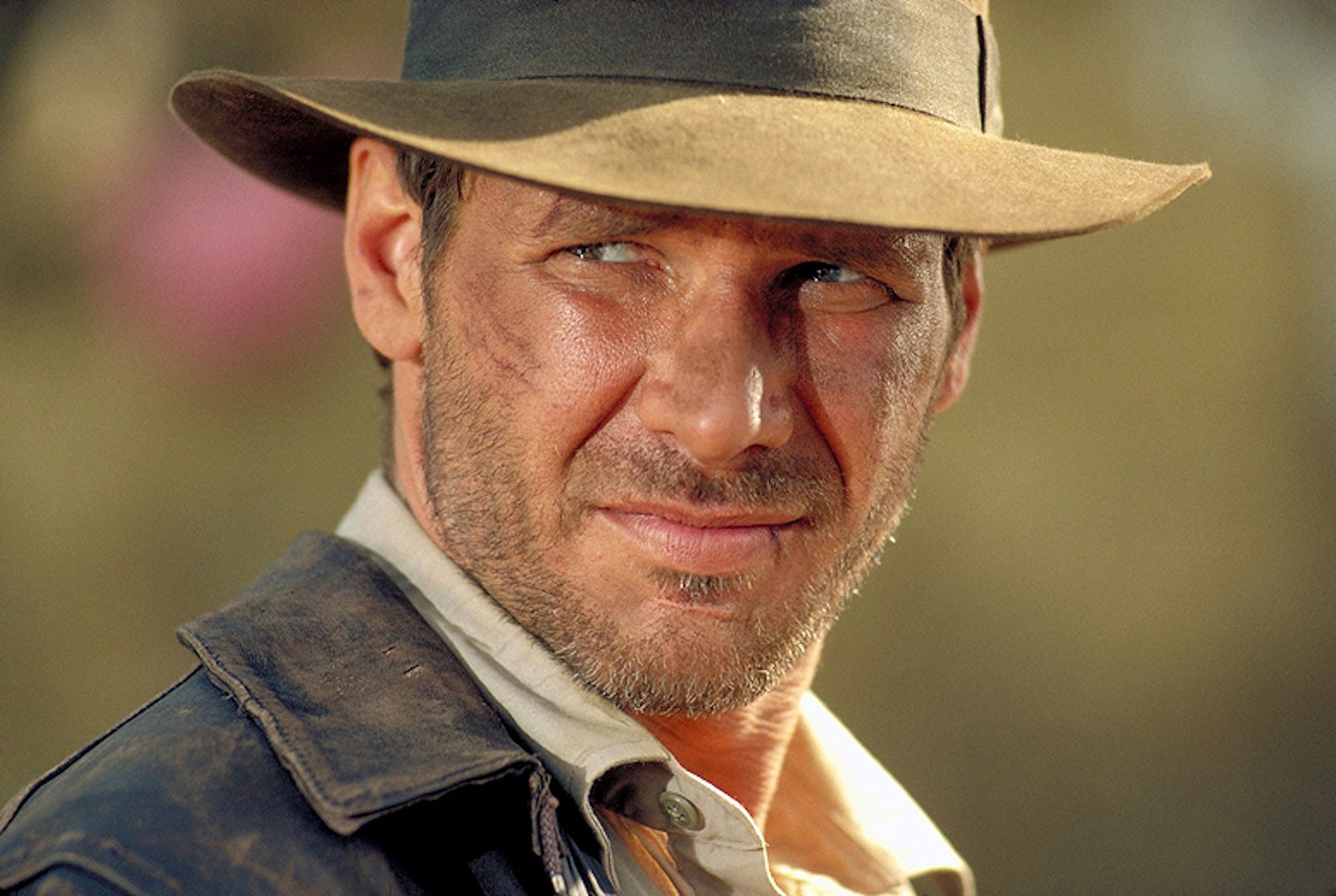
How very different things could have been if Magnum PI had been unsuccessful. Though we can see Tom Selleck, the nearly-Indy, in the role, Indiana Jones would surely have been a very different franchise. Harrison Ford possesses all the vital ingredients of Indiana Jones. Yes, he's handsome and agile. But far more than that he has a slight world-weariness, a seen-it-all quality that means we believe that he's developed the skills to escape any situation and will never see an artefact, no matter how old or unearthly, that will completely flummox him. Indy has always had an air of grumpiness and exasperation – see how he treats his lovers and family members (actual and honorary). So, while age may have slightly reduced the lengths he can leap and the power of his punches, it cannot dilute his character. His innate Indy-ness is, if anything, now more concentrated. He said it best himself "it's not the years, honey, it's the mileage".
Head back to our Indy hub for more exclusive features and interviews celebrating all four Indiana Jones movies.
 ![] Empire Magazine
![] Empire Magazine
For the best movie coverage every month, make sure you subscribe to Empire magazine - also available to download on iPad.

